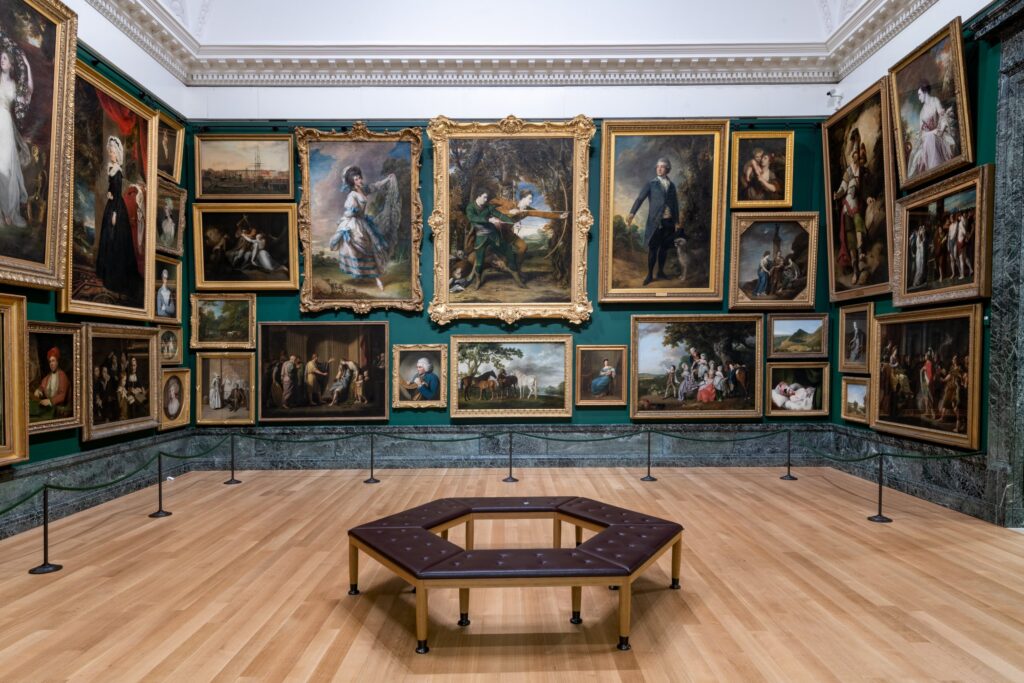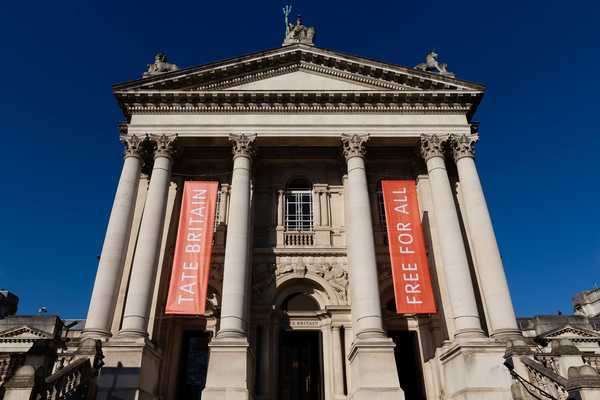Tate Britain, located on Millbank in London, is one of the most significant art institutions in the United Kingdom, dedicated to the collection, preservation, and display of British art from the 16th century to the present day. Established as part of the Tate network, which also includes Tate Modern, Tate Liverpool, and Tate St Ives, Tate Britain plays a central role in celebrating the evolution of British artistic expression, showcasing the works of iconic figures alongside contemporary innovators. Its collection, historic setting, and commitment to public engagement make it a cornerstone of London’s cultural landscape.
Origins and History
Tate Britain was founded in 1897, originally known as the National Gallery of British Art. Its establishment followed the creation of the Tate Gallery, named after Sir Henry Tate, a philanthropist and sugar magnate whose personal donation of funds and artworks helped to create a national repository for British art. Tate’s vision was to make art accessible to the public, reflecting the broader Victorian-era movement to expand cultural institutions and education.
The gallery officially opened its doors to the public in 1897, and its focus has always been on British artists, distinguishing it from other London institutions that prioritized European or global art. Over time, it evolved into Tate Britain in 2000, reflecting both its national scope and its unique position within the Tate network. While Tate Modern focuses on international contemporary art, Tate Britain remains dedicated to the history and evolution of British artistic achievement.
Architecture and Location
Tate Britain is housed in a striking Millbank building, designed in a neo-classical style by John Russell Pope, with later expansions and refurbishments enhancing both exhibition space and visitor experience. Its location on the banks of the River Thames provides dramatic views and situates the gallery within the historic heart of London’s cultural district.
Architectural highlights include:
- Duveen Galleries: Grand exhibition spaces used for major temporary exhibitions and installations.
- Clore Gallery: Dedicated to the work of J.M.W. Turner, one of Britain’s most celebrated painters, showcasing over 300 of his works, including watercolors, oils, and sketches.
- Millbank Entrance: A modernized, welcoming space that guides visitors through chronological and thematic displays.
The combination of historic architecture and contemporary enhancements ensures that Tate Britain is both visually impressive and functionally effective, accommodating its growing collection and increasing visitor numbers.
The Collection
Tate Britain’s collection spans over 70,000 works, encompassing paintings, sculptures, drawings, prints, and installations. It is a comprehensive representation of British art, capturing the evolution of style, technique, and subject matter over more than four centuries.
Early British Art
The collection begins with works from the 16th and 17th centuries, including portraiture, landscape, and historical painting. These works reflect Britain’s evolving cultural identity and artistic engagement with European trends. Key artists include:
- Hans Holbein the Younger, whose portraiture of Tudor royalty exemplifies precision, symbolism, and psychological depth.
- William Dobson, a notable portraitist of the English Civil War era.
These early works provide insight into the societal values, fashion, and political structures of their time, offering historical context as well as artistic mastery.
18th and 19th Century Art
The 18th and 19th centuries were a period of flourishing artistic innovation in Britain, represented in Tate Britain’s collection by:
- Joshua Reynolds and Thomas Gainsborough, leading portraitists of the Georgian era whose works combine elegance, technical skill, and insight into character.
- J.M.W. Turner, whose revolutionary approach to light, color, and atmosphere transformed landscape painting. Turner’s watercolors, oils, and sketches are central to the Clore Gallery, offering visitors an immersive experience of his visionary work.
- John Constable, whose landscapes capture the English countryside with remarkable realism and sensitivity to natural light.
This period reflects the interplay between artistic innovation, cultural values, and the broader historical context of Britain’s expansion and industrialization.
Pre-Raphaelite and Victorian Art
Tate Britain holds a major collection of Pre-Raphaelite works, celebrating the movement’s commitment to vibrant color, intricate detail, and moral or literary narratives. Artists such as Dante Gabriel Rossetti, John Everett Millais, and William Holman Hunt are well represented. These works reflect Victorian ideals, literary influences, and a fascination with medievalism, myth, and symbolism.
Victorian art more broadly explores social issues, historical events, and portraiture, capturing the complexities of a society undergoing industrial, political, and cultural transformation.
20th Century and Contemporary Art
While Tate Britain’s emphasis is on historical British art, it also engages with modern and contemporary artists, showing the evolution of style and expression into the present day. Works by David Hockney, Lucian Freud, Francis Bacon, and Barbara Hepworth illustrate the diversity of British art in the 20th century, ranging from figurative painting to abstraction and sculpture.
Contemporary works explore identity, politics, technology, and society, demonstrating the gallery’s commitment to documenting ongoing developments in British creativity.
Turner Collection
The Clore Gallery at Tate Britain is dedicated to J.M.W. Turner, arguably Britain’s most influential painter. Turner’s works revolutionized landscape and seascape painting, emphasizing light, atmosphere, and emotion. His pieces such as The Fighting Temeraire and Rain, Steam and Speed are celebrated for their innovative use of color, brushwork, and composition, influencing generations of artists. The Clore Gallery provides a focused space to explore Turner’s development, technique, and legacy, allowing visitors to immerse themselves in his vision.
Educational and Public Programs
Tate Britain is committed to education and accessibility, offering programs that engage visitors of all ages:
- Guided Tours: Expert-led tours provide historical and artistic context for the collection.
- Workshops and Courses: Opportunities for students, artists, and the public to explore techniques, history, and interpretation.
- Family Programs: Interactive sessions that encourage creativity and engagement for younger audiences.
- Digital Engagement: Online collections, virtual tours, and multimedia resources expand access to global audiences.
These initiatives reinforce the gallery’s role as a public institution, ensuring that its collections educate, inspire, and enrich cultural understanding.

Temporary Exhibitions
In addition to its permanent collection, Tate Britain hosts temporary exhibitions that focus on specific artists, movements, or themes. Recent exhibitions have highlighted:
- British modernism and abstraction.
- Contemporary British painters exploring identity and society.
- Retrospectives of influential figures such as Lucian Freud and David Hockney.
These exhibitions often include loans from international collections, providing fresh perspectives and expanding the narrative of British art.
Architectural and Visitor Experience
Tate Britain’s architecture and layout are designed to enhance the visitor experience. Its galleries are organized both chronologically and thematically, allowing visitors to trace the development of British art over time. Light-filled spaces, clear signage, and thoughtful curation ensure that each work can be appreciated individually while contributing to the broader story of British creativity.
Facilities such as cafés, lecture spaces, and a museum shop make the gallery accessible and enjoyable for a wide range of audiences, from scholars to casual visitors. Its location along the Thames also provides scenic views, connecting the gallery to London’s broader cultural and historic environment.
Cultural Significance
Tate Britain holds a unique position in Britain’s cultural life, emphasizing national identity through art. It documents social, political, and cultural developments across centuries, reflecting both continuity and change. By preserving historical works while embracing contemporary innovation, it serves as both a guardian of heritage and a platform for modern artistic expression.
Its focus on British art distinguishes it from other London galleries, providing a deep, coherent narrative of national creativity and achievement. Tate Britain also contributes to cultural tourism, education, and public engagement, reinforcing London’s status as a global center for art and culture.
Conclusion
Tate Britain is more than a museum; it is a living record of British artistic achievement. From its founding in 1897 as the National Gallery of British Art to its current role within the Tate network, it has celebrated, preserved, and interpreted the works of British artists for generations of visitors. Its collection spans centuries, from Tudor portraits and Georgian landscapes to Pre-Raphaelite masterpieces and contemporary innovations, providing a comprehensive view of the nation’s evolving artistic identity.
Through its exhibitions, educational programs, and commitment to accessibility, Tate Britain ensures that art is not only preserved but actively shared, studied, and appreciated. Its architectural grandeur, central London location, and dedication to both historic and contemporary works make it an essential destination for anyone seeking to understand Britain’s rich cultural and artistic heritage. In essence, Tate Britain embodies the creative spirit of Britain, inviting visitors to explore, reflect, and be inspired by the profound achievements of its artists.

